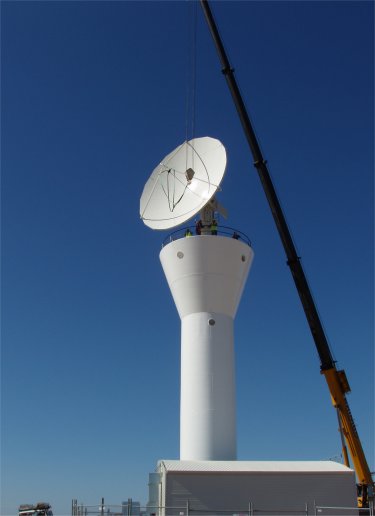Antenna and Pedestal

The hoisting of the Weather Radar Antenna on top of the antenna tower in Buckland, Adelaide (Australia)
-
Radar antennas have a large diameter depending on whether they are S-band, C-band, or X-band. S-band radars typically have antennas about 9m in diameter while C-band radars, like those in Canada, are smaller, having diameters just over 6m. X-band radar antennas are even smaller, on the order of 2 metres.
-
Antennas are normally installed in elevated locations to minimize the blocking effects of nearby buildings or other constructions
The microwaves produced by the transmitter are radiated by the antenna, which is designed to concentrate them into a beam shape appropriate to the particular application. In weather radars the beam usually takes the form of a narrow cone called a "pencil beam". When the microwaves strike any object in the environment, part of the energy is reflected or scattered back toward the antenna. The backscattered waves, or radar echoes, are picked up by the antenna and passed along the waveguide through the duplexer into the receiver. The echoes are modulated RF sine waves, the form of the modulation depending upon the interaction of the transmitted waves with the scattering characteristics of the target.
Video 1. Antenna characteristics.
Video 2. Gain and beamwidth